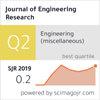改进基于机器人系统的工业服务的可配置过程控制方法
IF 2.2
4区 工程技术
Q3 ENGINEERING, MULTIDISCIPLINARY
引用次数: 0
摘要
基于自动化的机器人解决方案广泛应用于创新工业制造单位,以避免不必要的过程错误和结果延迟。机器人的密度和控制随工艺和生产需求而变化。本文介绍了一种集中式、可配置过程控制(CCPC)方法,用于可靠的工业任务组织和管理。该方法的可配置控制通过机器人系统识别预排队任务和自动处理。该方法利用状态依赖学习来识别高度可配置的机器人控制器,以提高任务处理率。自动化、互联系统通过自主决策实现工业任务的并发分配和交换,提高了任务的协同性。基于状态学习和并发性对自动化系统的性能进行了验证。结果表明,与传统方法相比,该方法的处理速度提高了12.29%,出错率降低了6.31%,处理延迟降低了11.1%,预排队率降低了11.68%。这些结果表明,所提出的策略效果良好,是智能产业中有效工作组织的前沿选择。响应:提出的自适应反演递归连接模糊小波神经网络(ABRFWNN)、任务级性能(TLP+SS)和封闭解析形式(CAF+DLAM)是证明CCPC有效性的重要方法。研究结果毫无疑问地证明,CCPC比这些其他方法表现得更好,代表了工业机器人效率的显著提高。本文章由计算机程序翻译,如有差异,请以英文原文为准。
A configurable process control method for robotic system-based industrial service improvements
Automation-based robotic solutions are widely employed in innovative industrial manufacturing units to avoid unnecessary process errors and delays in outcomes. The robots' density and controls vary with the process and production demands. This paper introduces a Centralized, Configurable Process Control (CCPC) method for reliable industrial task organization and management. The proposed method's configurable control identifies pre-queuing tasks and automated processing through robotic systems. This method uses state-dependent learning to identify the highly configurable robotic controller to improve the task processing rate. The automated, connected systems improve the task's cooperativeness by concurrent allocation and swapping the industrial tasks through self-decisions. The performance of the automated systems is verified based on state learning and concurrency. The results demonstrated substantial enhancements, with a 12.29% increase in processing rate, a 6.31% drop in mistakes, an 11.1% decrease in process latency, and an 11.68% decrease in pre-queuing ratio compared to conventional methods. These results show that the proposed strategy performs very well and is a cutting-edge option for effective job organization in smart industries. Response: The proposed Adaptive Backstepping Recurrently-Connected Fuzzy-Wavelet-Based Neural Network (ABRFWNN), Task-Level Performance (TLP+SS), and Closed Analytical Form (CAF+DLAM) were among the notable methods compared to prove CCPC's efficacy. The findings prove beyond a reasonable doubt that CCPC performs better than these other approaches, representing a significant improvement in the effectiveness of industrial robots.
求助全文
通过发布文献求助,成功后即可免费获取论文全文。
去求助
来源期刊

Journal of Engineering Research
ENGINEERING, MULTIDISCIPLINARY-
CiteScore
1.60
自引率
10.00%
发文量
181
审稿时长
20 weeks
期刊介绍:
Journal of Engineering Research (JER) is a international, peer reviewed journal which publishes full length original research papers, reviews, case studies related to all areas of Engineering such as: Civil, Mechanical, Industrial, Electrical, Computer, Chemical, Petroleum, Aerospace, Architectural, Biomedical, Coastal, Environmental, Marine & Ocean, Metallurgical & Materials, software, Surveying, Systems and Manufacturing Engineering. In particular, JER focuses on innovative approaches and methods that contribute to solving the environmental and manufacturing problems, which exist primarily in the Arabian Gulf region and the Middle East countries. Kuwait University used to publish the Journal "Kuwait Journal of Science and Engineering" (ISSN: 1024-8684), which included Science and Engineering articles since 1974. In 2011 the decision was taken to split KJSE into two independent Journals - "Journal of Engineering Research "(JER) and "Kuwait Journal of Science" (KJS).
 求助内容:
求助内容: 应助结果提醒方式:
应助结果提醒方式:


